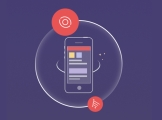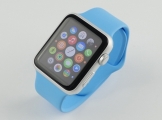|
我正在使用以下代码来测试 NSURLCache 中的行为。我在 AppDelegate 中初始化了一个 API 实例。我根据 Alamofire 的文档配置管理器,配置共享缓存,并分配 dataTaskWillCacheResponse 以确保响应确实会被缓存。
然后我调用 makeRequest 来检查缓存的响应是否存在(它不应该在第一次启动时),然后我使用我的 manager 发出请求相同的 URL,以便请求在整个测试过程中是等效的。
我在 dataTaskWillCacheResponse 的断点被命中,我继续,responseJSON block 被执行并且是 Successful 所以我 performTests 使用请求。
- 首先,我检查响应是否被缓存。 很好!
- 第二,(这就是问题所在)我删除了该请求的缓存响应,然后检查它是否存在。 确实如此:糟糕!
- 第三,我检查删除 all 缓存的响应是否会删除该响应。 确实:好! 但奇怪的是,这行得通,而之前尝试仅删除单个响应并没有...
代码如下:
import Alamofire
class API: Manager.SessionDelegate {
var manager: Manager!
override init() {
super.init()
manager = Manager(session: urlSession(), delegate: self)
configureCache(memoryCapacityMB: 5, diskCapacityMB: 25)
manager.delegate.dataTaskWillCacheResponse = { urlSession, dataTask, cachedResponse in
// Placing a breakpoint here confirms that the response is going to be cached
return cachedResponse
}
}
private func urlSession() -> NSURLSession {
let configuration = NSURLSessionConfiguration.defaultSessionConfiguration()
return NSURLSession(configuration: configuration, delegate: self, delegateQueue: nil)
}
private func configureCache(memoryCapacityMB memory: Int, diskCapacityMB disk: Int) {
let memoryCapacity = memory * 1024 * 1024
let diskCapacity = disk * 1024 * 1024
let sharedCache = NSURLCache(memoryCapacity: memoryCapacity, diskCapacity: diskCapacity, diskPath: nil)
NSURLCache.setSharedURLCache(sharedCache)
}
// MARK: Request
func makeRequest() {
// The response should be nil on the first launch since nothing has been cached
let request = NSURLRequest(URL: NSURL(string: "http://jsonplaceholder.typicode.com/posts")!)
let response = NSURLCache.sharedURLCache().cachedResponseForRequest(request)
print(response)
manager.request(.GET, request.URLString).responseJSON { response in
switch response.result {
case .Success:
self.performTests(with: response.request!)
case .Failure:
break
}
}
}
func performTests(with request: NSURLRequest) {
// Should exist
var response = NSURLCache.sharedURLCache().cachedResponseForRequest(request)
print(response)
// And it does: good!
// Remove the cached resopnse and check if it exists
NSURLCache.sharedURLCache().removeCachedResponseForRequest(request)
response = NSURLCache.sharedURLCache().cachedResponseForRequest(request)
print(response)
// And it does: bad!
// Try removing all cached responses and check if it exists
NSURLCache.sharedURLCache().removeAllCachedResponses()
response = NSURLCache.sharedURLCache().cachedResponseForRequest(request)
print(response)
// And it doesn't: good! But odd...
}
}
那么如何删除单个请求的缓存响应呢?这是意外行为吗?还是 NSURLCache 行为正确而我只是遗漏了一些东西?提前感谢您查看!
Best Answer-推荐答案
我记得大多数 URL 缓存更改不是同步的。它们仅在您返回运行循环并允许发生各种异步回调后才会真正发生。
尝试在延迟 3-5 秒后异步运行其余代码,看看请求是否已被删除。
如果这不能解决问题,请提交错误。
关于ios - NSURLCache Alamofire 删除缓存的响应,我们在Stack Overflow上找到一个类似的问题:
https://stackoverflow.com/questions/38729214/
|  客服电话
客服电话
 APP下载
APP下载

 官方微信
官方微信

















